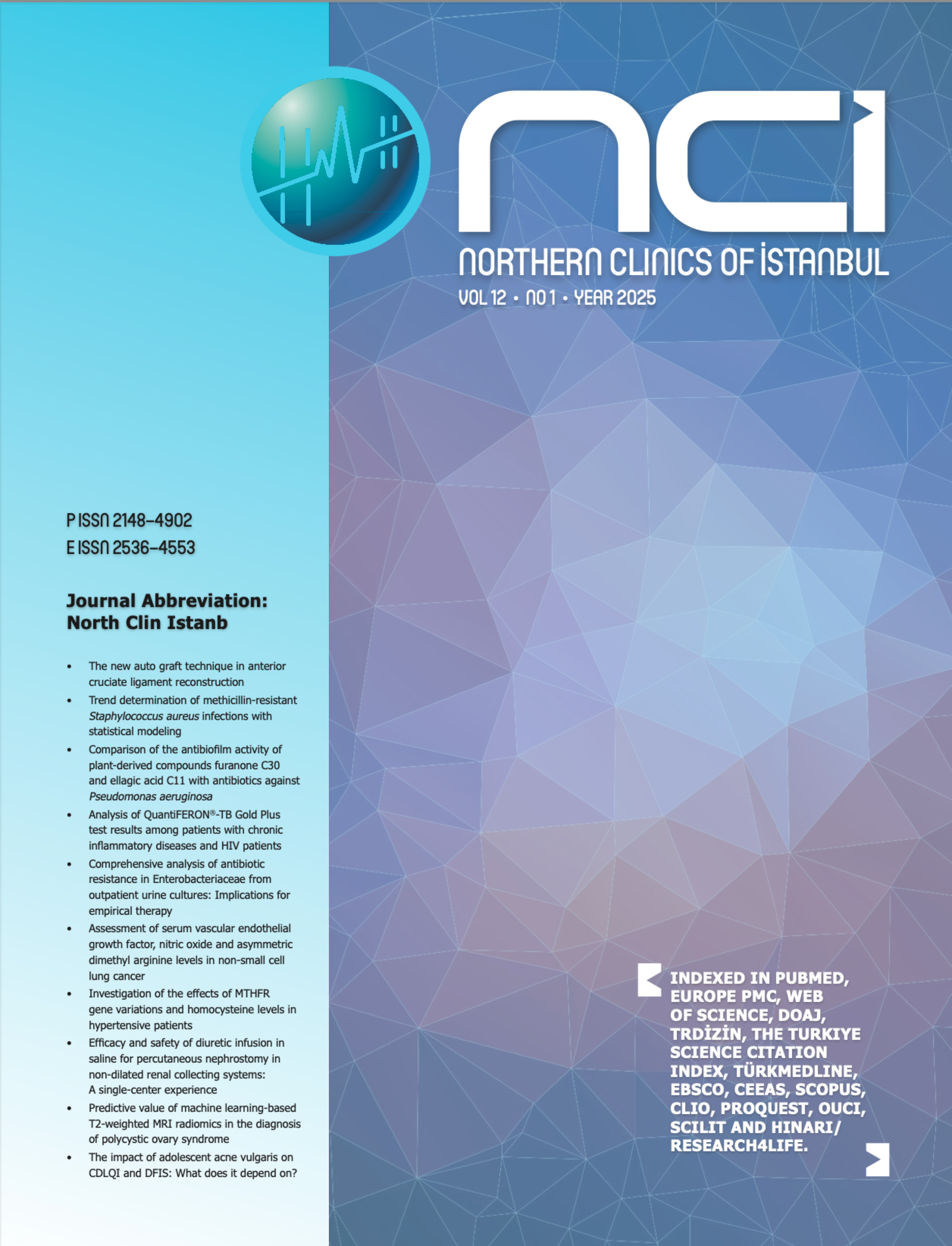Rhinolithiasis, a rare entity: Analysis of 31 cases and literature review
Nurullah Seyhun, Ebubekir Toprak, Kerem Sami Kaya, Senem Kurt Dizdar, Suat TurgutDepartment of Ear Nose Throat Head and Neck Surgery, Sisli Hamidiye Etfal Training and Research Hospital, Istanbul, TurkeyOBJECTIVE: Rhinolithiasis is a rare condition which results from deposition of salt around a endogenous or exogenous nidus. In the literature, most of the reports are single case studies. In this study, we aimed to present the characteristics, symptoms, diagnosis, and treatment methods of 31 rhinolithiasis cases and to focus on the current literature.
METHODS: We retrospectively reviewed 31 rhinolithiasis cases which have been diagnosed and treated in a tertiary care center between January 2014 and December 2018. Patient characteristics, presenting symptoms, concomitant sinonasal disorders, and type of surgery were noted. Descriptive statistics were carried out.
RESULTS: Mean age was 25.4±15.7. The cases were comprised 14 female patients (45.2%) and 17 male patients (54.8%). The most common presenting symptom was nasal obstruction (71%). Malodorous unilateral rhinorrhea was present in 17 patients (54.8%). Epistaxis snoring and sleep apnea were other rare symptoms. In 21 of the cases (67.7%), rhinolith was located between inferior turbinate and septum which was the most common location seen in our series. The number of patients who were under the age of 18 was 13, in 2 of them, rhinolith was found to be formed around a plastic bead, and in 2 of them, fruit seeds were the nidus. The most common concomitant sinonasal pathology was septal deviation which was detected in 20 of the patients (64.5%), adenoid vegetation and nasal polyposis were other disorders. In 20 of the patients (64.5%), simple removal of the rhinolith using a forceps with the help of a rigid nasal endoscope was performed. Eight of the 17 patients had severe deviation and septoplasty was performed at the same time, which was the most common concomitant surgical intervention (25.8%). In 3 patients (9.6%), functional endoscopic sinus surgery was performed at the same time.
CONCLUSION: Our series is one of the largest series in the literature. The most common presenting symptom was nasal obstruction followed by malodorous rhinorrhea. Accompanying sinonasal disorders should be addressed to improve the outcome. Rigid or flexible endoscopic examination should be used to detect a rhinolith. Computed tomography scan can diagnose a hidden rhinolith in a patient with nasal obstruction.
Rhinolithiasis, a rare entity: Analysis of 31 cases and literature review
Nurullah Seyhun, Ebubekir Toprak, Kerem Sami Kaya, Senem Kurt Dizdar, Suat TurgutŞişli Hamidiye Etfal Eğitim ve Araştırma Hastanesi, Kulak Burun Boğaz Baş Boyun Cerrahisi Kliniği, İstanbulAMAÇLAR: Rinolitiazis, endojen veya ekzojen nidus etrafında tuz birikmesinden kaynaklanan nadir bir durumdur. Literatürde raporların çoğu tek vaka çalışmalarıdır. Bu çalışmada 31 rinolitiazis olgusunun özelliklerini, semptomlarını, tanı ve tedavi yöntemlerini sunmayı ve güncel literatüre odaklanmayı amaçladık.
YÖNTEMLER: Ocak 2014-Aralık 2018 tarihleri arasında üçüncü basamak bir merkezde tanı konulan ve tedavi edilen 31 rinolitiazis olgusu retrospektif olarak incelendi. Hasta özellikleri, semptomları, eşlik eden sinonazal bozukluklar, cerrahi türü kaydedildi. Betimsel istatistikler yapıldı.
SONUÇLAR: Yaş ortalaması 25.4 ± 15.7 idi. Olgular 14 kadın hasta (% 45.2) ve 17 erkek hastadan (% 54.8) oluştu. En sık başvuru semptom burun tıkanıklığıydı (% 71). 17 hastada (% 54.8) kötü kokulu tek taraflı rinore vardı. Epistaksis horlaması ve uyku apnesi diğer nadir semptomlardı. Olguların 21'inde (% 67.7) rinolit serimizde en sık görülen yerleşim yeri olan inferior konka ve septum arasında yerleşti. 18 yaşın altındaki hasta sayısı 13 idi, bunlardan 2'sinde rinolitin plastik bir boncuk etrafında oluştuğu ve 2'sinde meyve tohumları nidus idi. En sık eşlik eden sinonazal patoloji 20 hastada (% 64.5) saptanan septal sapma, adenoid bitki örtüsü ve nazal polipozis diğer bozukluklardı. Hastaların 20'sinde (% 64.5) rinolitin rijit bir burun endoskopu yardımıyla forseps kullanılarak çıkarılması sağlandı. 17 hastanın sekizinde (8) ciddi sapma vardı ve en sık eşlik eden cerrahi girişim olan septoplasti yapıldı (% 25.8). Üç hastada (% 9.6) aynı anda fonksiyonel endoskopik sinüs cerrahisi yapıldı.
SONUÇ: Dizimiz literatürdeki en büyük serilerden biridir. En sık başvuru semptomu burun tıkanıklığı ve ardından kötü kokulu rinore idi. Sonucu iyileştirmek için eşlik eden sinonazal bozukluklar ele alınmalıdır. Bir rinoliti tespit etmek için sert veya esnek endoskopik muayene kullanılmalıdır. BT taraması, burun tıkanıklığı olan bir hastada gizli bir rinoliti teşhis edebilir. (NCI-2020-0214)
Manuscript Language: English





















